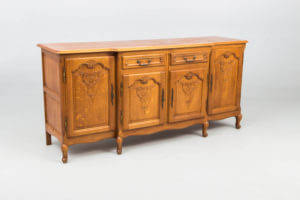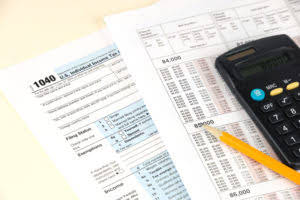Content

The articles and research support materials available on this site are educational and are not intended to be investment or tax advice. All such information is provided solely for convenience purposes only and all users thereof should be guided accordingly. The information featured in this article is based on our best estimates of pricing, package details, contract stipulations, and service available at the time of writing. Pricing will vary based on various factors, including, but not limited to, the customer’s location, package chosen, added features and equipment, the purchaser’s credit score, etc. For the most accurate information, please ask your customer service representative. Clarify all fees and contract details before signing a contract or finalizing your purchase.

Plastic, rubber, steel, iron, timber and many agricultural outputs like sugarcane, sugar beets, jute and cotton etc. are examples of direct materials that are processed to produce salable finished products. Therefore, once the batch of sticks gets to the second process—the packaging department—it already has costs attached to it. In other words, the packaging department receives both the drumsticks and their related costs from the shaping department. For the basic size 5A stick, the packaging department adds material at the beginning of the process. The 5A uses only packaging sleeves as its direct material, while other types may also include nylon, felt, and/or the ingredients for the proprietary handgrip. Direct labor and manufacturing overhead are used to test, weigh, and sound-match the drumsticks into pairs. In the Peep-making process, the direct materials of sugar, corn syrup, gelatin, color, and packaging materials are added at the beginning of steps 1, 2, and 5.
Examples Of Prime Cost And Conversion Cost
But you can search and find ways to determine an impressive conversion cost for your business. After all, how else can a company know if its marketing efforts are in the right direction? Conversion cost or cost per conversion is one such marketing metric. Prime cost can be directly traced to a product while factory overhead, a component of conversion cost, cannot be directly traced to a product.
- ABC Company’s prime costs amount to $650,000 while conversion costs amount to $600,000.
- Direct materials is the basic physical ingredient, matter or substance which the company processes to make a salable product.
- Beginning inventory refers to the total value of the inventory an organization holds at the start of an accounting period.
- The actual wood and metal used for the chair are considered direct materials.
- Total manufacturing costs are a combination of three factors – direct material, direct labor, and manufacturing overheads, while conversion costs do not include direct materials.
- The conversion cost per unit for the month of January was $5.20 ($130,000 in conversion costs divided by 25,000 units produced equals 5.2).
If there is a house in your area with the space you require for less than £320,000, it is worth considering a move, rather than investing in the loft conversion. Should planning be required, expect planning permission fees (£206); these may be included in your agreed contract with the loft company, but do check.
How Much Will A Loft Conversion Cost In 2022?
Prime costs are mainly used to reassure managers about product pricing. The greater the ratio of prime costs over total costs the higher the chance a firm’s product cost accuracy is. This is because manufacturing overhead can’t be directly traced to any one product and must be allocated. Often the allocation of manufacturing overhead is inaccurate or misleading and can result in poor product pricing which leads to decreased profitability and poor decision-making.

It’s likely that design fees are included within your loft company’s quote, but you may wish to appoint an architect to design your loft conversion. Being on your toes https://www.bookstime.com/ and constantly chopping and changing can help you increase your conversion rate. And the better conversion rate is sure to make way for a better cost per conversion.
Learn The Basics Of Accounting For Free
This typically includes the cost of direct labor and manufacturing overhead (e.g. indirect materials, utility costs, depreciation, etc.). Let’s assume that the organization has produced 2,500 units of a product in the first quarter of FY2020. The manufacturing overheads of the production include the depreciation of $5,000, insurance costs of $10,000, maintenance costs of $5,000 and electricity costs of $10,000. Conversion costs include indirect materials, indirect labor, and other overhead costs. ABC Company’s prime costs amount to $650,000 while conversion costs amount to $600,000. Conversion cost is the cost required to convert raw material into finished goods. Both types of costs include many same expenses, yet they provide a different viewpoint on how efficient the production process is.
This includes the cost of direct materials , direct labor, and other expenses that are directly traceable to the manufacturing of a product. The overhead costs that are part of conversion costs are any expenses that aren’t directly tied to the production of inventory but that are still necessary. For example, the cost to maintain the equipment that produces goods would be considered an overhead cost. Consider the example of a professional furniture maker who is hired to construct a coffee table for a customer. The prime costs for creating the table include both the cost of the furniture maker’s labor and the raw materials required to construct the table, including the lumber, hardware, and paint. Direct materials is the basic physical ingredient, matter or substance which the company processes to make a salable product.
Prime Costs And Conversion Costs
Still, without it, the production process cannot start or continue. Other examples of overheads include indirect materials, indirect labor, rent, taxes, insurance, tools, equipment, supplies, and utilities.
- It is used in developing a price model for a product and estimating the cost of the final product.
- It may apply either at the beginning, in the middle, or at the end.
- Balance SheetA balance sheet is one of the financial statements of a company that presents the shareholders’ equity, liabilities, and assets of the company at a specific point in time.
- Period costs are recorded in the profit and loss statement of an organization.
- In other words, the packaging department receives both the drumsticks and their related costs from the shaping department.
- One of the metrics commonly used to do this is conversion costs.
Note that the spend we are talking about is the marketing spend. Also, this cost is commonly referred to as cost per conversion . As a result, businesses need to be proactive in making changes at the right time.
How To Calculate Manufacturing Work In Progress
We are talking about indirect materials, overheads which not necessarily indirect materials or indirect labor, and also indirect materials and indirect labor. According to Accounting Coach, conversion costs refer to the costs involved in converting raw materials into finished goods.

So, how you define conversions for your campaign is up to you. Add conversion cost to one of your lists below, or create a new one. Bedsits arose from the subdivision of larger dwellings into low-cost accommodation at low conversion cost. Therefore, we can say that 15,000 partially complete units are equivalent to 7,500 complete units. These two components of conversion cost are explained below.
Let us understand the calculation of conversion cost with the help of an example. Company A incurs the following expenses for producing units. Direct Wages – $19,000; Indirect Wages $2,500; Direct Material – $14,500; Indirect Material – $500; Equipment Depreciation – $3,250; and Factory Insurance $1,000. For simplicity, let’s assume there is no process inventory.
- So to convert eggs, flour, and yeast into bread, you’d at least have to incur the cost of hiring someone to prepare the dough as well as the cost of using an oven.
- For now, let’s move on to the importance of calculating conversion cost.
- Conversion costs equate to the sum of labor and overhead costs.
- Examples of manufacturing overhead include the utilities, indirect labor, repairs and maintenance, depreciation, etc. that is occurring within a company’s manufacturing facilities.
- The workers who get paid hourly to assemble a chair out of the wood and metal are considered direct labor.
The conversion cost approximately $3,000 and the dealer’s list price was $3,750. Despite hundreds of thousands starving to death in a famine at the time, it is believed that the conversion cost at least $100 million. You will have to pay a currency conversion cost to convert back to sterling. Conversion cost also provides us with the value of beginning and ending inventory, which is to be reported in both the company’s balance sheet and income statement. Identifying expenditures and keeping track of them gives a business its primary direction regarding income generation and profit margin calculation. Conversion cost calculation serves these benefits, which are listed below. Stay updated on the latest products and services anytime, anywhere.
Calculating conversion costs can give you some vital insight into your marketing budget, either o digital or non-digital marketing worlds. It tells you where to spend the money and where not to, which becomes even more critical for small and medium-sized businesses. These factors include the industry and your product or service.
Figure Out The Best Time To Show Your Ads
Instead, figure out the best time to run your ads by diving into your analytics and show your ads only at these times. Cost per conversion is a term conversion costs used in online advertising to refer to the total paid for an advertisement in relation to the success in achieving the goal of that advertisement.
For instance, if certain expenses are for a specific production run, such as reworking parts to get the correct output, then we may exclude such costs. Knowledge about conversion costs also helps managers and supervisors in tracking the cost of production.
